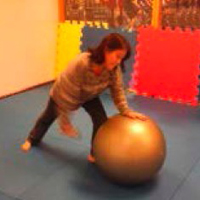Strengthening exercises using swiss ball improve pain, health status, quality of life and muscle strength in patients with fibromyalgia: a randomized controlled trial

Submitted: 24 September 2020
Accepted: 22 January 2021
Published: 19 April 2021
Accepted: 22 January 2021
Abstract Views: 9460
PDF: 3846
Publisher's note
All claims expressed in this article are solely those of the authors and do not necessarily represent those of their affiliated organizations, or those of the publisher, the editors and the reviewers. Any product that may be evaluated in this article or claim that may be made by its manufacturer is not guaranteed or endorsed by the publisher.
All claims expressed in this article are solely those of the authors and do not necessarily represent those of their affiliated organizations, or those of the publisher, the editors and the reviewers. Any product that may be evaluated in this article or claim that may be made by its manufacturer is not guaranteed or endorsed by the publisher.
Similar Articles
- M. Ferrito, G. Cincinelli, M. Manara, R. Di Taranto, E.G. Favalli, R. Caporali, Retention rate of tumor necrosis factor inhibitors, anti-interleukin 17, and anti-interleukin 12/23 drugs in a single-center cohort of psoriatic arthritis patients , Reumatismo: Vol. 75 No. 2 (2023)
- G. Ferraccioli, Biologic therapy with anti-TNFa in rheumathoid atrhritis , Reumatismo: Vol. 57 No. s4 (2005)
- N.J. Mchugh, E.R. Soriano, CONVENTIONAL THERAPY OF PSORIATIC ARTHRITIS: EVIDENCE-BASED REVIEW , Reumatismo: Vol. 59 No. s1 (2007)
- G. Turchetti, S. Bellelli, M. Mosca, The social cost of rheumatoid arthritis in Italy: the results of an estimation exercise , Reumatismo: Vol. 65 No. 6 (2013)
- G. Pasero, P. Marson, A short history of anti-rheumatic therapy. II. Aspirin , Reumatismo: Vol. 62 No. 2 (2010)
- A. Mastroianni, F. Allegrini, S. Nardi, D. Donatucci, F. Girelli, C. Guidi, Carpal tunnel syndrome in HIV-positive patients coinfected with HCV , Reumatismo: Vol. 69 No. 4 (2017)
- N. Franzolini, L. Quartuccio, G. De Marchi, S. De Vita, Efficacy of immunosoppressive therapy and steroid sparing effect in interstitial lung disease associated to antisynthetase syndrome , Reumatismo: Vol. 59 No. 3 (2007)
- A. Spadaro, E. Lubrano, Psoriatic arthritis: imaging techniques , Reumatismo: Vol. 64 No. 2 (2012)
- G. Pasero, P. Marson, short history of anti-rheumatic therapy. IV. Corticosteroids , Reumatismo: Vol. 62 No. 4 (2010)
- S. D'Angelo, C. Palazzi, I. Olivieri, Psoriatic arthritis: treatment strategies using biologic agents , Reumatismo: Vol. 64 No. 2 (2012)
<< < 4 5 6 7 8 9 10 11 12 13 > >>
You may also start an advanced similarity search for this article.

 https://doi.org/10.4081/reumatismo.2021.1357
https://doi.org/10.4081/reumatismo.2021.1357




